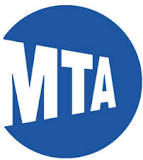MTA Chairman Patrick Foye reported that declaration during Monday’s meeting of the MTA’s Long Island Railroad/Metro-North Joint Committee, updating the PTC implementation issues creating concern the MTA would miss the December 2020 deadline for the two commuter railroads. [See “MTA grills vendors on PTC equipment issues,” Trains News Wire, April 17, 2019.]
In other another Monday committee meeting, topics included defective welds on new subway cars from Bombardier and an update on L Train subway construction.
The PTC issues led Foye and three MTA board members to meet last week with Siemens AG President and CEO Joe Kaeser, and Mark Buncher, president of Siemens Mobility in the U.S. and Canada. Foye said he had made it clear that Siemens’ performance after expenditures of over $1 billion was unacceptable, leading to the company’s commitment to do whatever it takes to meet the PTC deadline.
Much remains to be done for the two railroads to meet the deadline. Currently, only a 10-mile stretch of Metro-North’s Hudson Line has had an extended revenue service demonstration, with the other lines in an earlier stage, site integration testing. Revenue service demonstrations are the final step before applying to the Federal Railroad Administration for PTC certification. On the Long Island Rail Road, one branch is in an extended revenue service demonstration, with another almost complete; most lines are further along in the PTC process than Metro-North. One problem area for the LIRR is at Harold Interlocking in Queens, where the frequency of trains has impeded progress; that area is only in site integration testing.
In the New York City Transit committee meeting, President Andy Byford reported that almost 200 R179 cars built by Bombardier will have to be taken out of service to repair improper welds on pillar posts. Another 126 of the R179 are still to be delivered; problems on those cars will be corrected at the factory. The order for cars to replace the R32 “Brightliners” built in 1964-65, the subway system’s oldest cars, is well past its promised date of completion; Bombardier has built 16 extra cars as a penalty for not complying with the contract time frame.
Byford and MTA Capital Construction President Janno Lieber also delivered a report on the first month of L Train tunnel reconstruction.
“So far, so good,” Byford said. He noted that other lines have seen a large increase in riders on weekends and evenings when L Train service is curtailed to allow for tunnel work. With the exception of the Union Square station in Manhattan, crowding has not been as big an issue as envisioned, he said.
Lieber said a new substation at Avenue B in eastern Manhattan, part of a plan to increase L Train frequencies after the construction project, is almost complete. Demolition that is part of the construction is well under way, he said. That work entails pulling and strapping unused power cables and smoothing the tunnel walls for better subway clearance. Monitoring is ensuring that toxic silica dust particles are not spreading through the tunnels to riders and workers.














I do as well.
Having worked in private industry, and wondering how we stayed in business with all of the inefficiency and poor management decisions, I concur with Paul.
One could conclude from reading ideological comments on News Wire that it is solely government and never private enterprise that can’t properly execute a large complex project.
Now it’s possible that the root cause of the pillar weld failures and the inability of the billion PTC (really CBTC) system to meet requirements are entirely a result of mercurial, nonsensical and/or ever changing requirements from the MTA. It wouldn’t shock me, because the OTHER ideological nonsense is that government always takes the public interest into account rather than political constituencies.
But Occam’s Razor would in my opinion seem to lead to the conclusion that problems with large organization accountability in both sectors public as well as private is quite likely. And further that any solution to this woeful state of affairs would not be one coming from either the ideological left OR the ideological right.